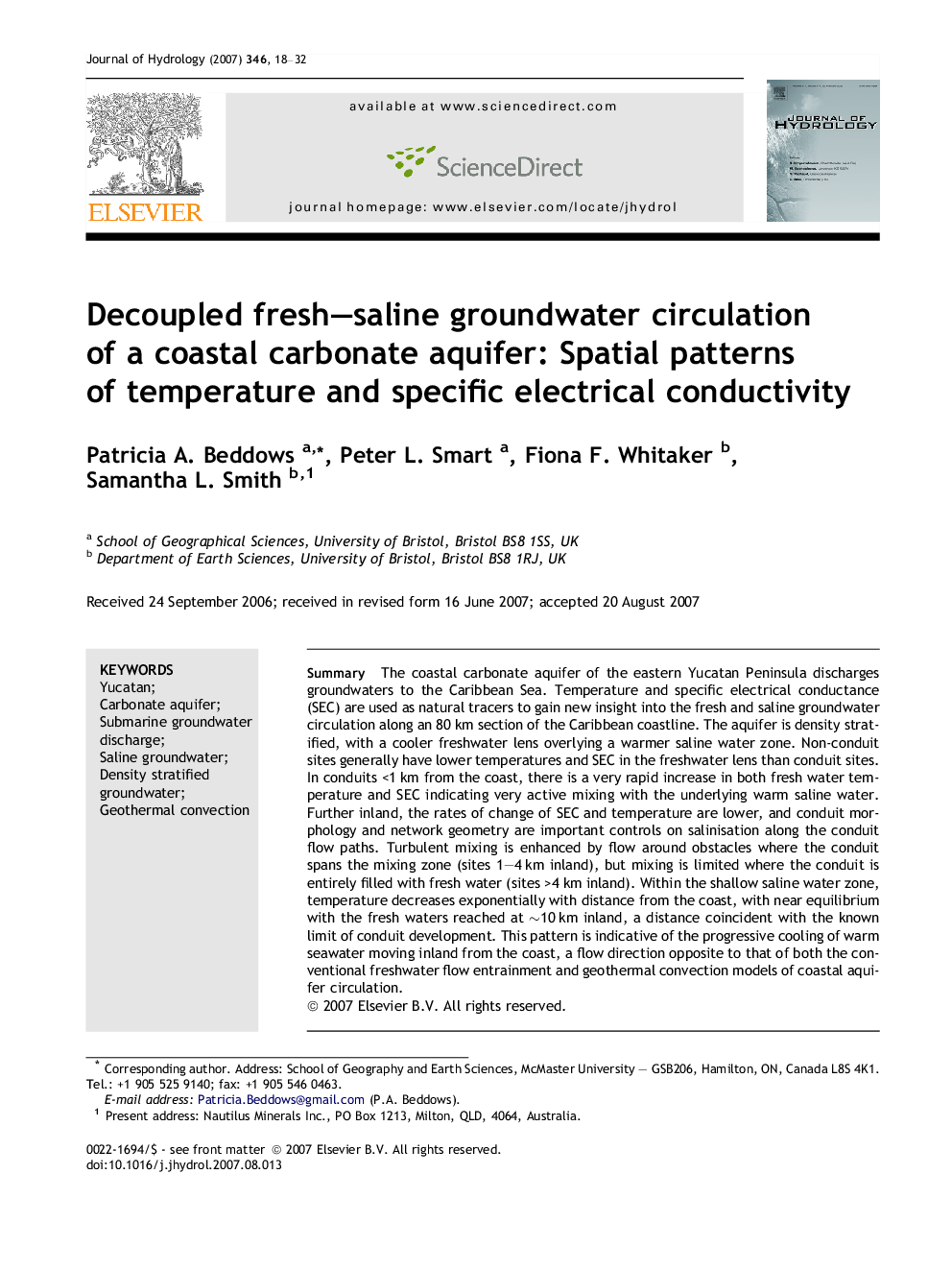| Article ID | Journal | Published Year | Pages | File Type |
|---|---|---|---|---|
| 4579727 | Journal of Hydrology | 2007 | 15 Pages |
SummaryThe coastal carbonate aquifer of the eastern Yucatan Peninsula discharges groundwaters to the Caribbean Sea. Temperature and specific electrical conductance (SEC) are used as natural tracers to gain new insight into the fresh and saline groundwater circulation along an 80 km section of the Caribbean coastline. The aquifer is density stratified, with a cooler freshwater lens overlying a warmer saline water zone. Non-conduit sites generally have lower temperatures and SEC in the freshwater lens than conduit sites. In conduits <1 km from the coast, there is a very rapid increase in both fresh water temperature and SEC indicating very active mixing with the underlying warm saline water. Further inland, the rates of change of SEC and temperature are lower, and conduit morphology and network geometry are important controls on salinisation along the conduit flow paths. Turbulent mixing is enhanced by flow around obstacles where the conduit spans the mixing zone (sites 1–4 km inland), but mixing is limited where the conduit is entirely filled with fresh water (sites >4 km inland). Within the shallow saline water zone, temperature decreases exponentially with distance from the coast, with near equilibrium with the fresh waters reached at ∼10 km inland, a distance coincident with the known limit of conduit development. This pattern is indicative of the progressive cooling of warm seawater moving inland from the coast, a flow direction opposite to that of both the conventional freshwater flow entrainment and geothermal convection models of coastal aquifer circulation.
